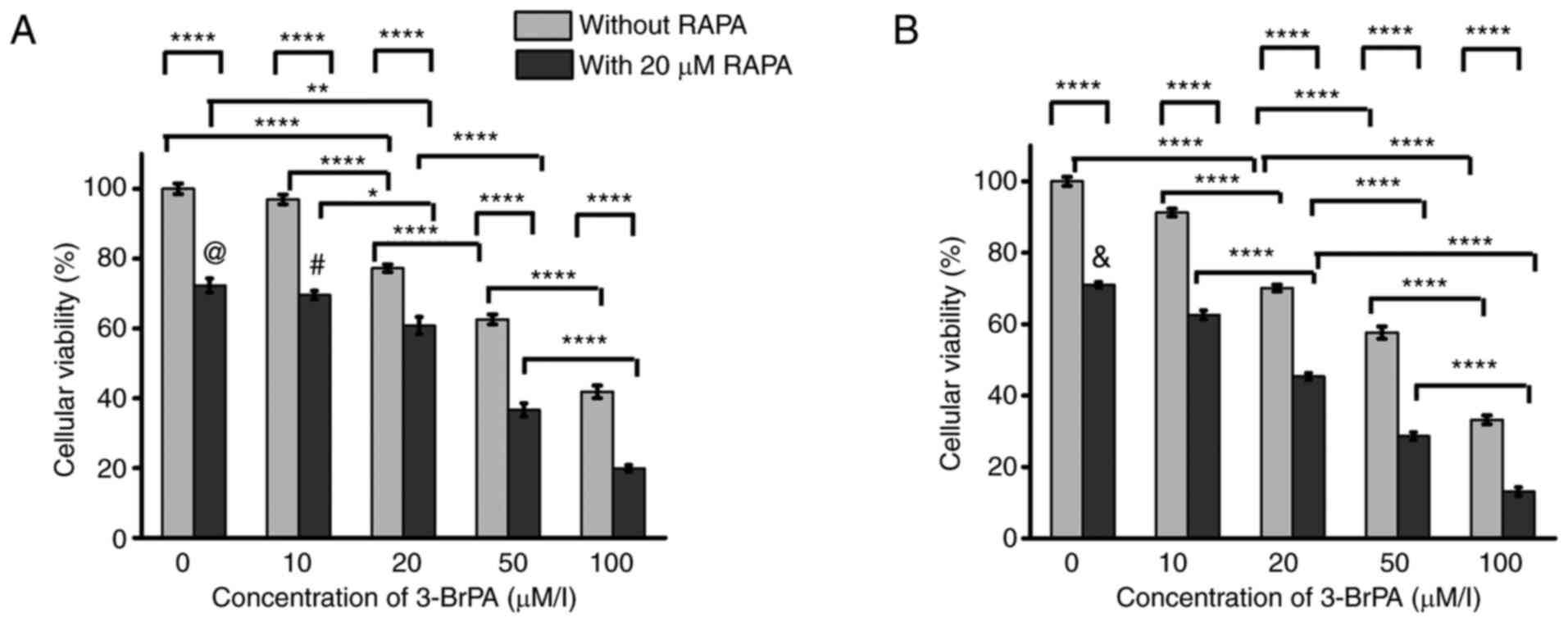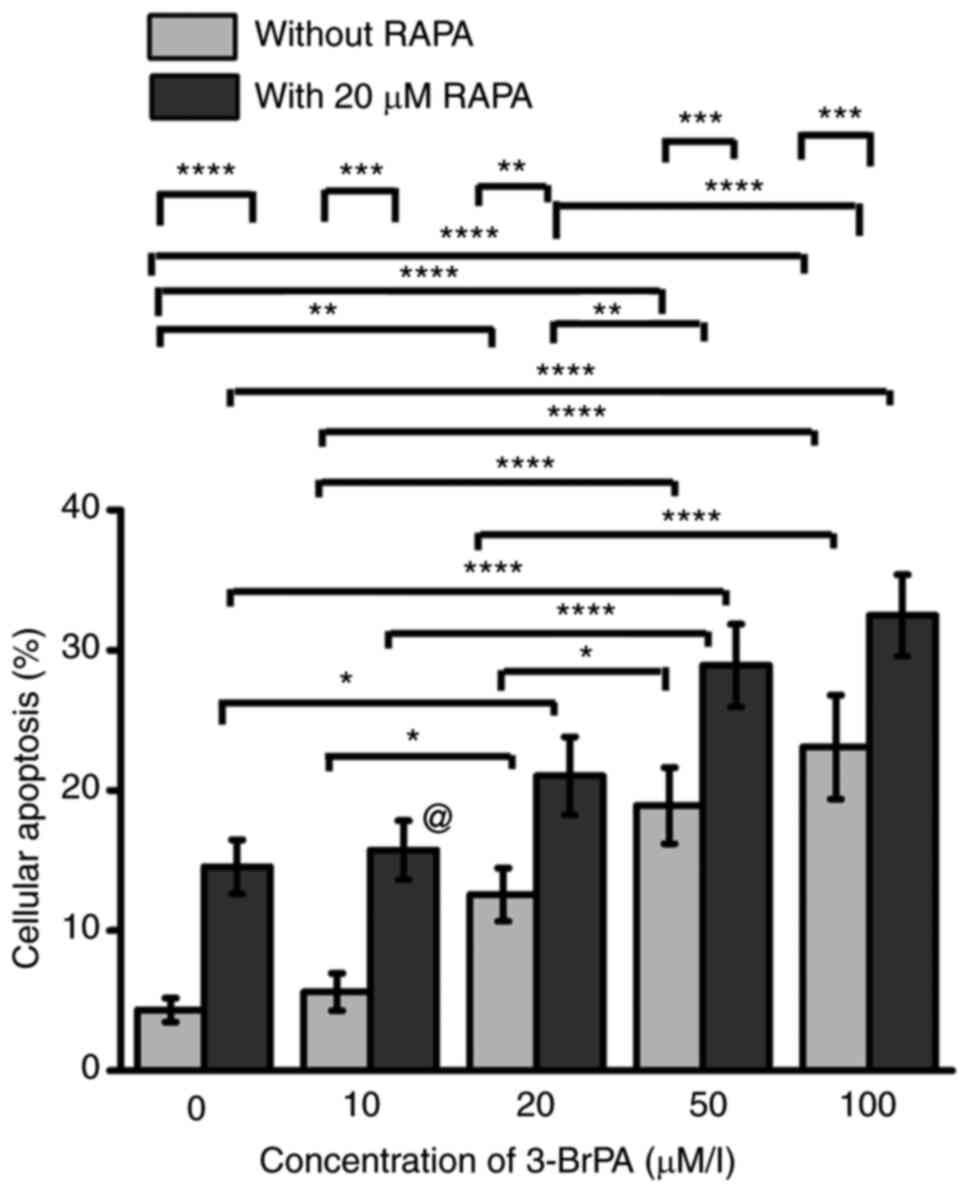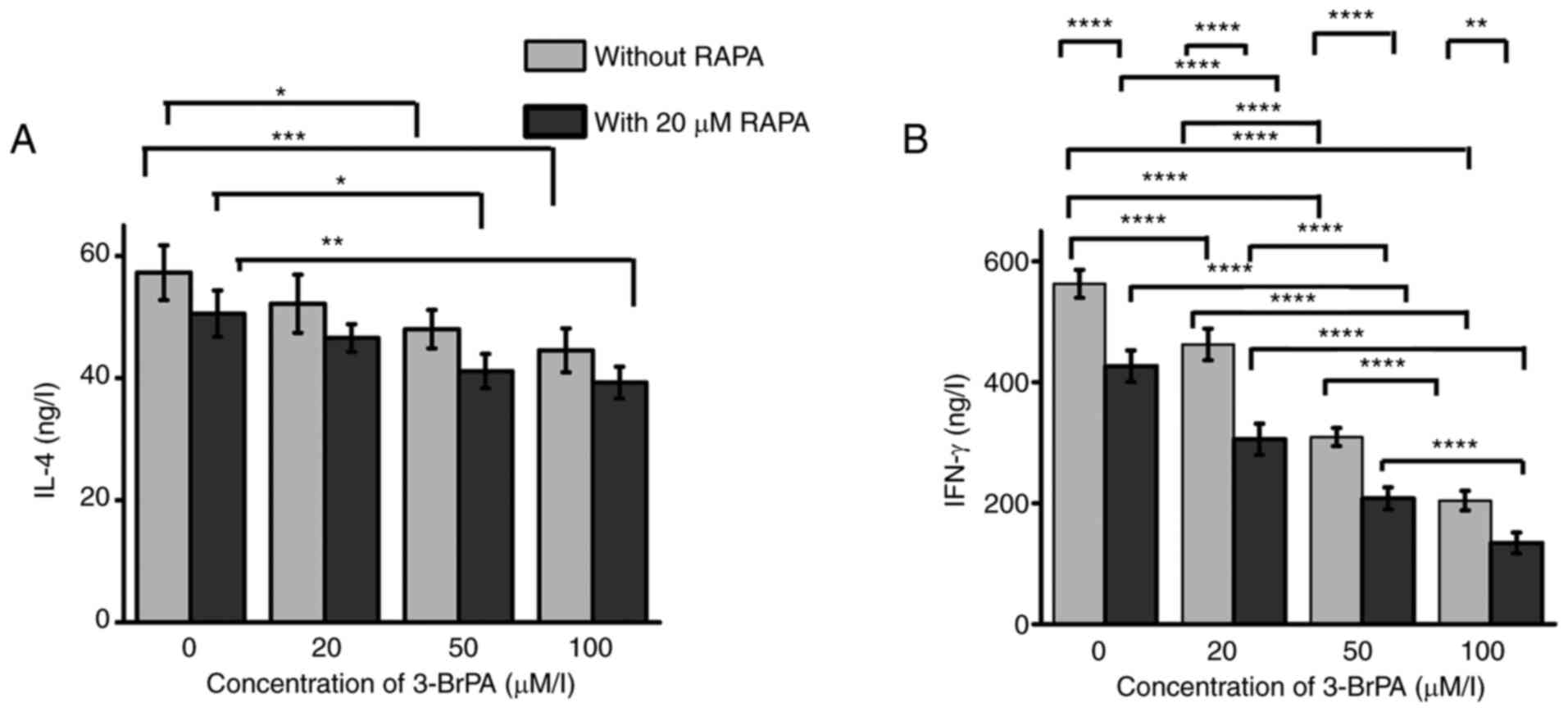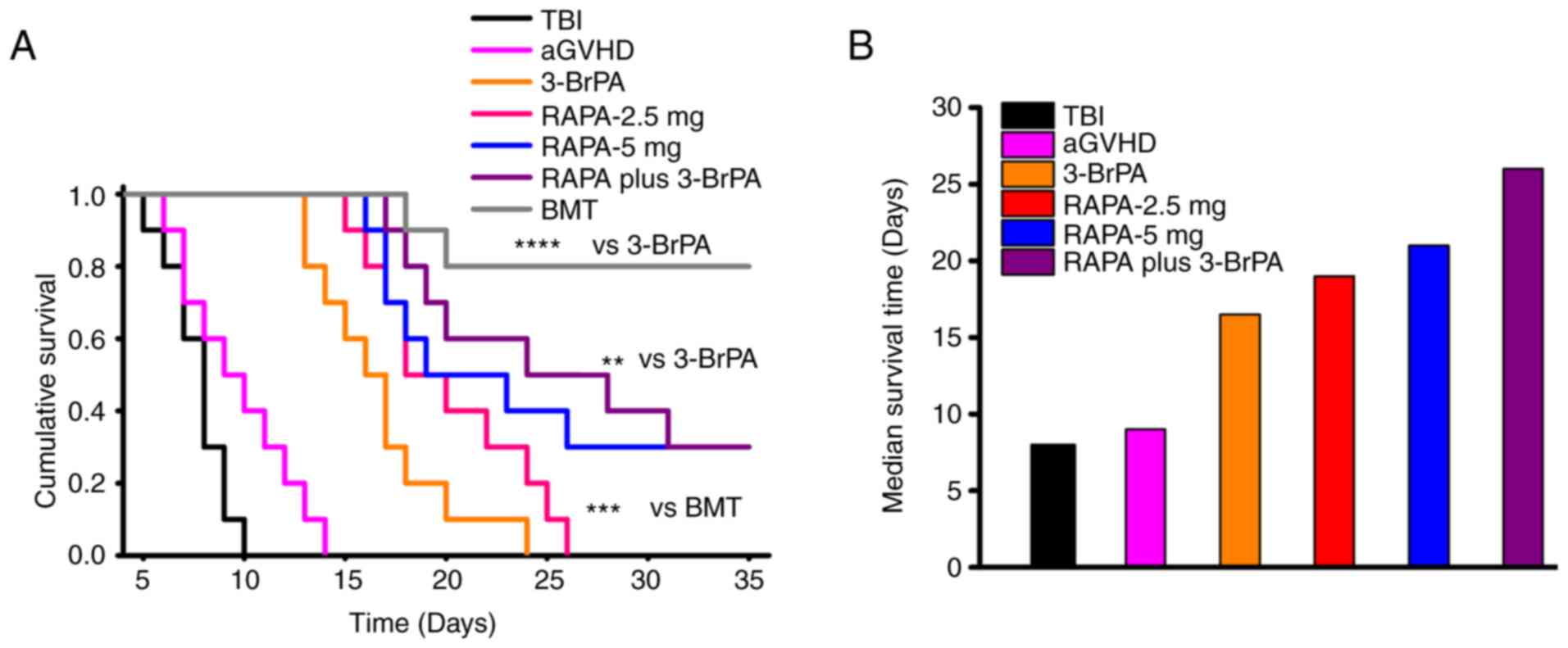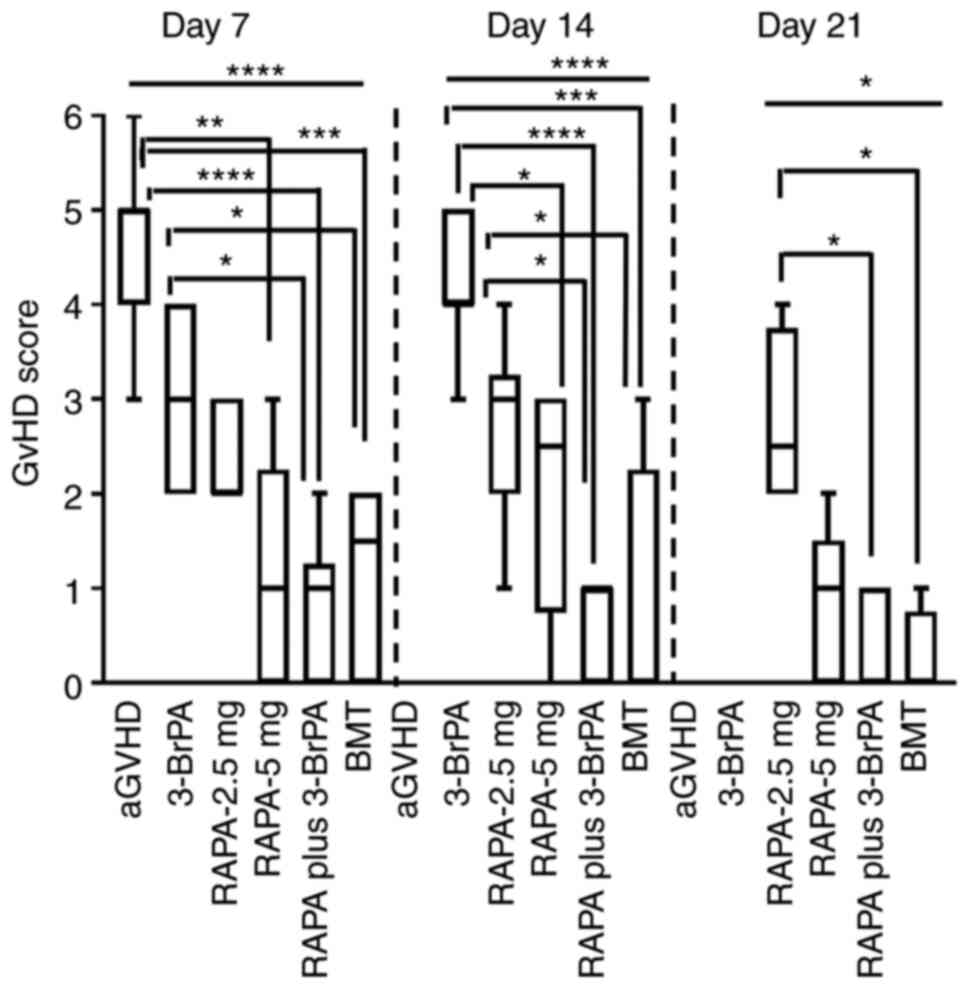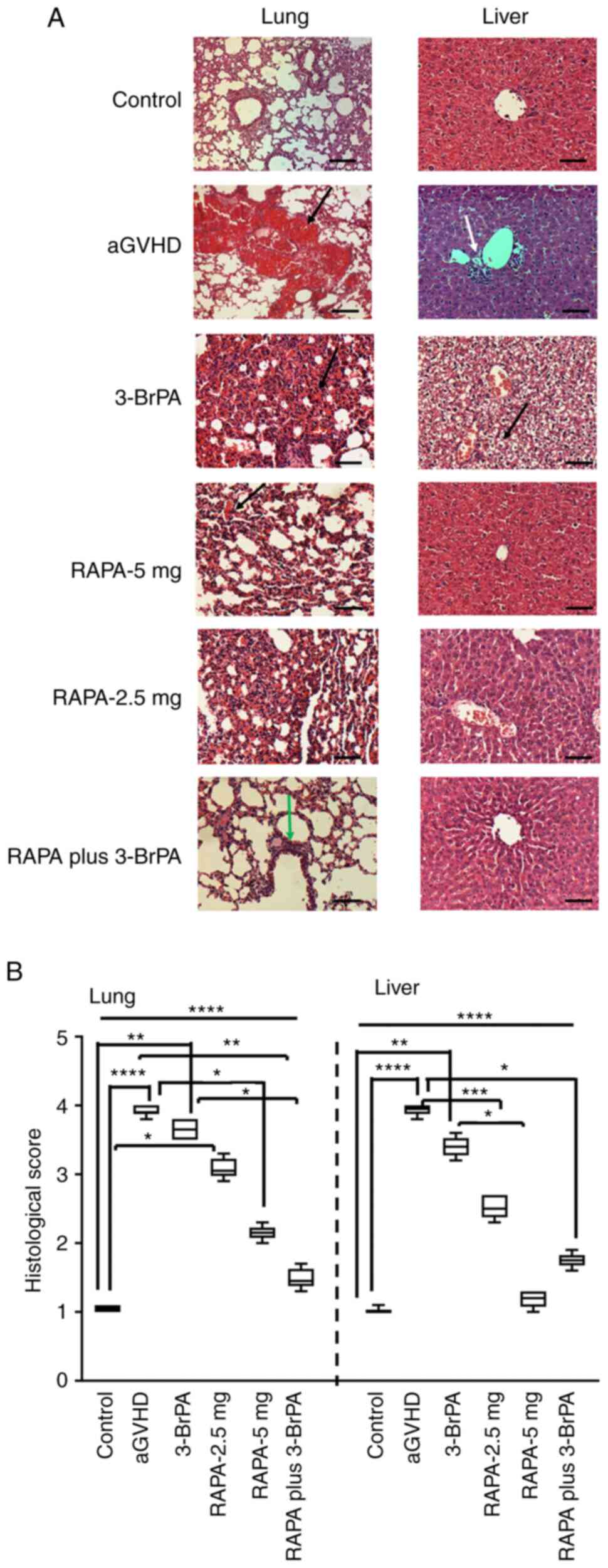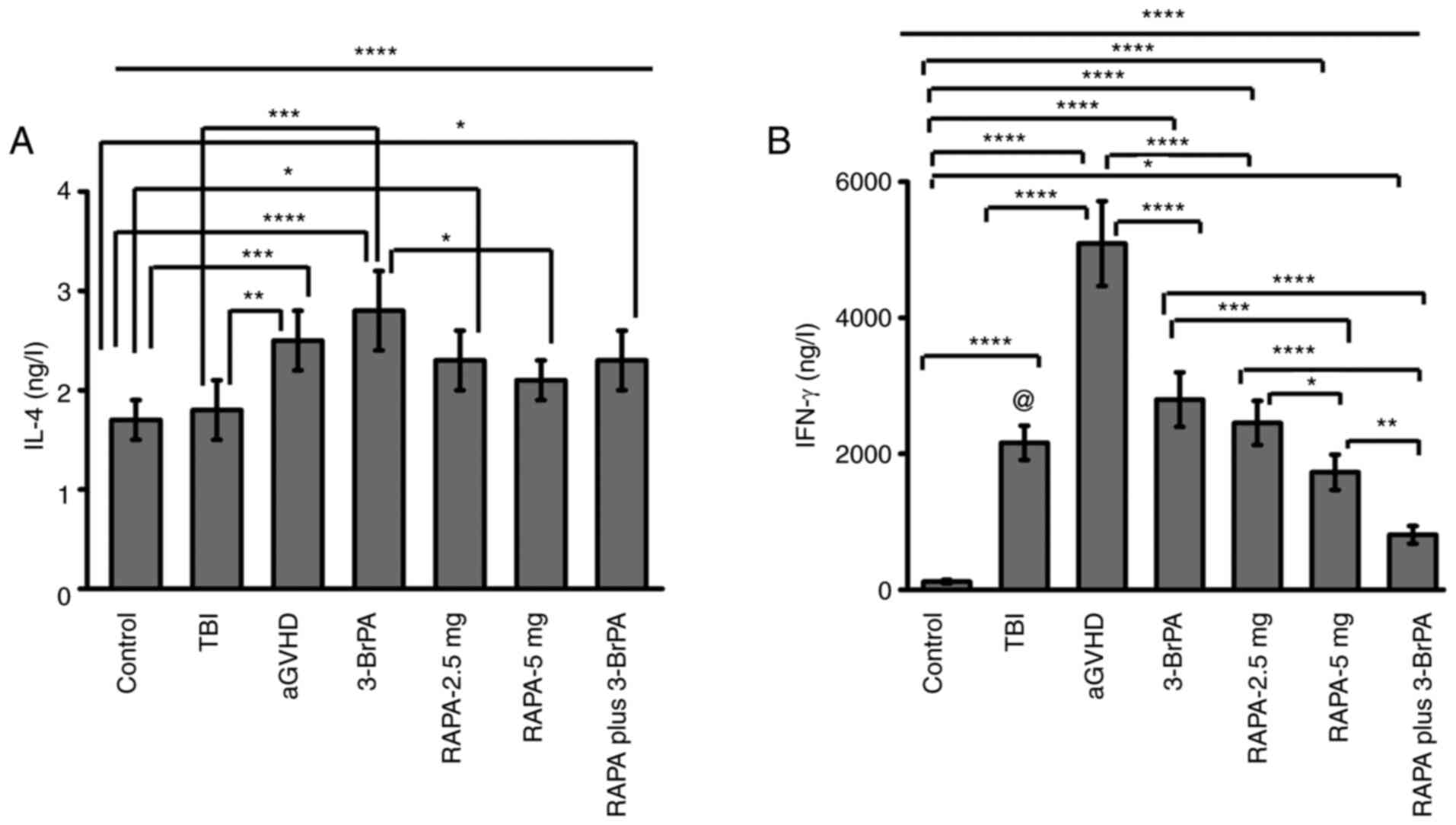|
1
|
Singh AK and McGuirk JP: Allogeneic stem
cell transplantation: A historical and scientific overview. Cancer
Res. 76:6445–6451. 2016.PubMed/NCBI View Article : Google Scholar
|
|
2
|
de Witte T, Bowen D, Robin M, Malcovati L,
Niederwieser D, Yakoub-Agha I, Mufti GJ, Fenaux P, Sanz G, Martino
R, et al: Allogeneic hematopoietic stem cell transplantation for
MDS and CMML: Recommendations from an international expert panel.
Blood. 129:1753–1762. 2017.PubMed/NCBI View Article : Google Scholar
|
|
3
|
Schmitz N, Lenz G and Stelljes M:
Allogeneic hematopoietic stem cell transplantation for T-cell
lymphomas. Blood. 132:245–253. 2018.PubMed/NCBI View Article : Google Scholar
|
|
4
|
Gonsalves WI, Buadi FK, Ailawadhi S,
Bergsagel PL, Khan AA, Dingli D, Dispenzieri A, Fonseca R, Hayman
SR, Kapoo P, et al: Utilization of hematopoietic stem cell
transplantation for the treatment of multiple myeloma: A mayo
stratification of myeloma and risk-adapted therapy (mSMART)
consensus statement. Bone Marrow Transplant. 54:353–367.
2019.PubMed/NCBI View Article : Google Scholar
|
|
5
|
Ghimire S, Weber D, Mavin E, Wang XN,
Dickinson AM and Holler E: Pathophysiology of GvHD and other
HSCT-related major complications. Front Immunol.
8(79)2017.PubMed/NCBI View Article : Google Scholar
|
|
6
|
Bhatia S, Armenian SH and Landier W: How I
monitor long-term and late effects after blood or marrow
transplantation. Blood. 130:1302–1314. 2017.PubMed/NCBI View Article : Google Scholar
|
|
7
|
Zeiser R and Blazar BR: Acute
graft-versus-host disease-biologic process, prevention, and
therapy. N Eng J Med. 377:2167–2179. 2017.PubMed/NCBI View Article : Google Scholar
|
|
8
|
Nguyen HD, Chatterjee S, Haarberg KM, Wu
Y, Bastian D, Heinrichs J, Fu J, Daenthanasanmak A, Schutt S,
Shrestha S, et al: Metabolic reprogramming of alloantigen-activated
T cells after hematopoietic cell transplantation. J Clin Invest.
126:1337–1352. 2016.PubMed/NCBI View Article : Google Scholar
|
|
9
|
Pearce EL, Poffenberger MC, Chang CH and
Jones RG: Fueling immunity: Insights into metabolism and lymphocyte
function. Science. 342(1242454)2013.PubMed/NCBI View Article : Google Scholar
|
|
10
|
Gatza E, Wahl DR, Opipari AW, Sundberg TB,
Reddy P, Liu C, Glick GD and Ferrara JLM: Manipulating the
bioenergetics of alloreactive T cells causes their selective
apoptosis and arrests graft-versus-host disease. Sci Transl Med.
3(67ra8)2011.PubMed/NCBI View Article : Google Scholar
|
|
11
|
Byersdorfer CA, Tkachev V, Opipari AW,
Goodell S, Swanson J, Sandquist S, Glick GD and Ferrara JLM:
Effector T cells require fatty acid metabolism during murine
graft-versus-host disease. Blood. 122:3230–3237. 2013.PubMed/NCBI View Article : Google Scholar
|
|
12
|
Akers LJ, Fang W, Levy AG, Franklin AR,
Huang P and Zweidler-McKay PA: Targeting glycolysis in leukemia: A
novel inhibitor 3-BrOP in combination with rapamycin. Leuk Res.
35:814–820. 2011.PubMed/NCBI View Article : Google Scholar
|
|
13
|
Xu RH, Pelicano H, Zhang H, Giles FJ,
Keating MJ and Huang P: Synergistic effect of targeting mTOR by
rapamycin and depleting ATP by inhibition of glycolysis in lymphoma
and leukemia cells. Leukemia. 19:2153–2158. 2005.PubMed/NCBI View Article : Google Scholar
|
|
14
|
Zhou S, Min Z, Sun K, Qu S, Zhou J, Duan
H, Liu H, Liu X, Gong Z and Li D: MiR-199a-3p/Sp1/LDHA axis
controls aerobic glycolysis in testicular tumor cells. Int J Mol
Med. 42:2163–2174. 2018.PubMed/NCBI View Article : Google Scholar
|
|
15
|
Attia YM, El-Abhar HS, Al Marzabani MM and
Shouman SA: Targeting glycolysis by 3-bromopyruvate improves
tamoxifen cytotoxicity of breast cancer cell lines. BMC Cancer.
15(838)2015.PubMed/NCBI View Article : Google Scholar
|
|
16
|
Del Rey MJ, Valín Á, Usategui A,
García-Herrero CM, Sánchez-Aragó M, Cuezva JM, Galindo M, Bravo B,
Cañete JD, Blanco FJ, et al: Hif-1α knockdown reduces glycolytic
metabolism and induces cell death of human synovial fibroblasts
under normoxic conditions. Sci Rep. 7(3644)2017.PubMed/NCBI View Article : Google Scholar
|
|
17
|
Abdel-Wahab AF, Mahmoud W and Al-Harizy
RM: Targeting glucose metabolism to suppress cancer progression:
Prospective of anti-glycolytic cancer therapy. Pharmacol Res.
150(104511)2019.PubMed/NCBI View Article : Google Scholar
|
|
18
|
Zhang Q, Pan J, Lubet RA, Komas SM,
Kalyanaraman B, Wang Y and You M: Enhanced antitumor activity of
3-bromopyruvate in combination with rapamycin in vivo and in vitro.
Cancer Prev Res (Phila). 8:318–326. 2015.PubMed/NCBI View Article : Google Scholar
|
|
19
|
Palmer JM, Chen BJ, DeOliveira D, Le ND
and Chao NJ: Novel mechanism of rapamycin in GVHD: Increase in
interstitial regulatory T cells. Bone Marrow Transplant.
45:379–384. 2010.PubMed/NCBI View Article : Google Scholar
|
|
20
|
Scheurer J, Reisser T, Leithäuser F,
Messmann JJ, Holzmann K, Debatin KM and Strauss G: Rapamycin-based
graft-versus-host disease prophylaxis increases the
immunosuppressivity of myeloid-derived suppressor cells without
affecting T cells and anti-tumor cytotoxicity. Clin Exp Immunol.
202:407–422. 2020.PubMed/NCBI View Article : Google Scholar
|
|
21
|
Gruppuso PA, Boylan JM and Sanders JA: The
physiology and pathophysiology of rapamycin resistance:
Implications for cancer. Cell Cycle. 10:1050–1058. 2011.PubMed/NCBI View Article : Google Scholar
|
|
22
|
Fantini MC, Dominitzki S, Rizzo A, Neurath
MF and Becker C: In vitro generation of CD4+ CD25+ regulatory cells
from murine naive T cells. Nat ProtocC. 2:1789–1794.
2007.PubMed/NCBI View Article : Google Scholar
|
|
23
|
Chou TC: Drug combination studies and
their synergy quantification using the chou-talalay method. Cancer
Res. 70:440–446. 2010.PubMed/NCBI View Article : Google Scholar
|
|
24
|
Ni X, Xia Y, Zhou S, Peng H, Wu X, Lu H,
Wang H, Liu R, Blazar BR, Gu J and Lu L: Reduction in murine acute
GVHD severity by human gingival tissue-derived mesenchymal stem
cells via the CD39 pathways. Cell Death Dis. 10(13)2019.PubMed/NCBI View Article : Google Scholar
|
|
25
|
Liu Q, Ning J, Zhang Y, Wu X, Luo X and
Fan Z: Idiopathic pneumonia syndrome in mice after allogeneic bone
marrow transplantation: Association between idiopathic pneumonia
syndrome and acute graft-versus-host disease. Transpl Immunol.
23:12–17. 2010.PubMed/NCBI View Article : Google Scholar
|
|
26
|
Cooke KR, Kobzik L, Martin TR, Brewer J,
Delmonte J Jr, Crawford JM and Ferrara JL: An experimental model of
idiopathic pneumonia syndrome after bone marrow transplantation: I.
The roles of minor H antigens and endotoxin. Blood. 88:3230–3239.
1996.PubMed/NCBI
|
|
27
|
Ju XP, Xu B, Xiao ZP, Li JY, Chen L, Lu SQ
and Huang ZX: Cytokine expression during acute graft-versus-host
disease after allogeneic peripheral stem cell transplantation. Bone
Marrow Transplant. 35:1179–1186. 2005.PubMed/NCBI View Article : Google Scholar
|
|
28
|
Shi LZ, Wang R, Huang G, Vogel P, Neale G,
Green DR and Chi H: HIF1alpha-dependent glycolytic pathway
orchestrates a metabolic checkpoint for the differentiation of TH17
and Treg cells. J Exp Med. 208:1367–1376. 2011.PubMed/NCBI View Article : Google Scholar
|
|
29
|
Shin HJ, Baker J, Leveson-Gower DB, Smith
AT, Sega EI and Negrin RS: Rapamycin and IL-2 reduce lethal acute
graft-versus-host disease associated with increased expansion of
donor type CD4+CD25+Foxp3+ regulatory T cells. Blood.
118:2342–2350. 2011.PubMed/NCBI View Article : Google Scholar
|
|
30
|
Zeiser R, Nguyen VH, Beilhack A, Buess M,
Schulz S, Baker J, Contag CH and Negrin RS: Inhibition of CD4+CD25+
regulatory T-cell function by calcineurin-dependent interleukin-2
production. Blood. 108:390–399. 2006.PubMed/NCBI View Article : Google Scholar
|
|
31
|
Sánchez-Fructuoso AI, Ruiz JC,
Pérez-Flores I, Alamillo CG, Romero NC and Arias M: Comparative
analysis of adverse events requiring suspension of mTOR inhibitors:
Everolimus versus sirolimus. Transplant Proc. 42:3050–3052.
2010.PubMed/NCBI View Article : Google Scholar
|
|
32
|
Nikolic B, Lee S, Bronson RT, Grusby MJ
and Sykes M: Th1 and Th2 mediate acute graft-versus-host disease,
each with distinct end-organ targets. J Clin Invest. 105:1289–1298.
2000.PubMed/NCBI View Article : Google Scholar
|
|
33
|
Guo H, Qiao Z, Zhu L, Wang H, Su L, Lu Y,
Cui Y, Jiang B, Zhu Q and Xu L: Th1/Th2 cytokine profiles and their
relationship to clinical features in patients following
nonmyeloablative allogeneic stem cell transplantation. Am J
Hematol. 75:78–83. 2004.PubMed/NCBI View Article : Google Scholar
|
|
34
|
Yu Y, Wang D, Liu C, Kaosaard K, Semple K,
Anasetti C and Yu XZ: Prevention of GVHD while sparing GVL effect
by targeting Th1 and Th17 transcription factor T-bet and RORγt in
mice. Blood. 118:5011–5020. 2011.PubMed/NCBI View Article : Google Scholar
|
|
35
|
Golubovskaya V and Wu L: Different subsets
of T cells, memory, effector functions, and CAR-T immunotherapy.
Cancers (Basel). 8(36)2016.PubMed/NCBI View Article : Google Scholar
|
|
36
|
Choi J, Ziga ED, Ritchey J, Collins L,
Prior JL, Cooper ML, Piwnica-Worms D and DiPersio JF: IFNγR
signaling mediates alloreactive T-cell trafficking and GVHD. Blood.
120:4093–4103. 2012.PubMed/NCBI View Article : Google Scholar
|















